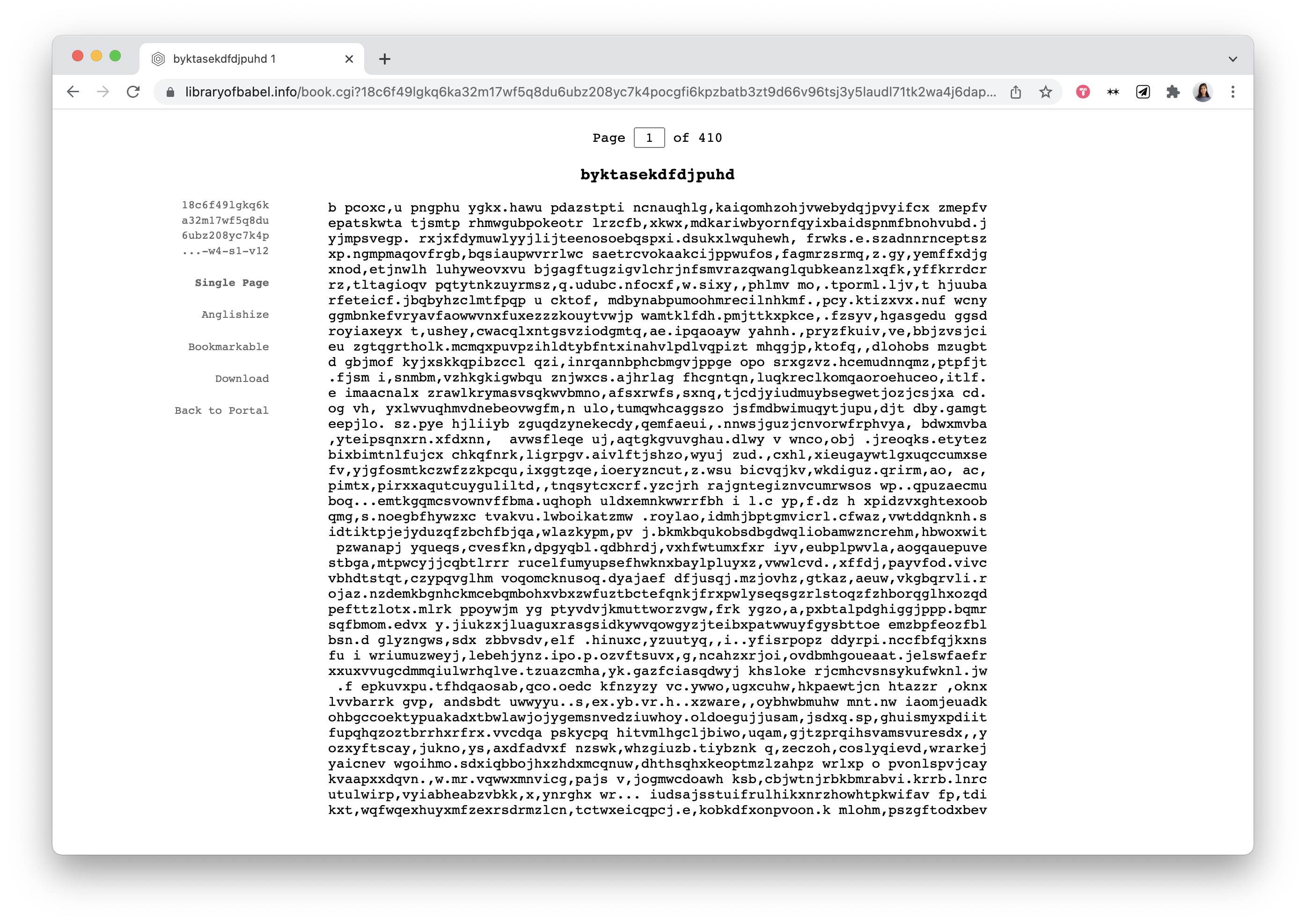Jorge Luis Borges’ Library of Babel (which inspired the project by Jonathan Basile, pictured below) has stuck in my mind as an example of effective complexity. His concept of the generated book leverages the order, rules, and familiarity of books as pages of paragraphs, sentences, and words made up of letters and spaces while imposing additional constraints that each book has 410 pages, 40 lines per page, and ~80 letters per line – which teasingly seems to promise meaning. He introduces disorder through the characters in the book being random. What I find compelling about his concept is that it appears to follow total order in terms of meaning (taking form in the book-medium that is typically equivalent with meaning/knowledge) but in actuality is total randomness: a white noise of letters and spaces. It also illustrates the “10,000 Bowls of Oatmeal” problem well in that the resulting books are so random that they are meaningless and effectively indiscernable from each other. The story that plays out the concept is predicated on that exact false promise of meaning.
(sorry that was > 50 words)

The “Problem of Meaning” with generative art is especially challenging to me. From what I see of the generative art world, much of it tends towards being “unapologetically abstract and formal in [its] generative practice, seeking only to reinvigorate the sublime and instill a sense of awe” (173) which in a sense is appealing to me as a humble goal that demonstrates and celebrates beauty in its “truth to process” or truth to system. At the same time, I can’t help but look at all the generative art on Twitter or sold as NFTs and feel some skepticism and clash with my (debilitating) idealism: it shouldn’t be so “easy” to capitalize on generative art, it feeds a little too seamlessly into fast-consumption platforms, and at worst falls short at being visual eye candy.
